Common mistakes alpaca-owners make
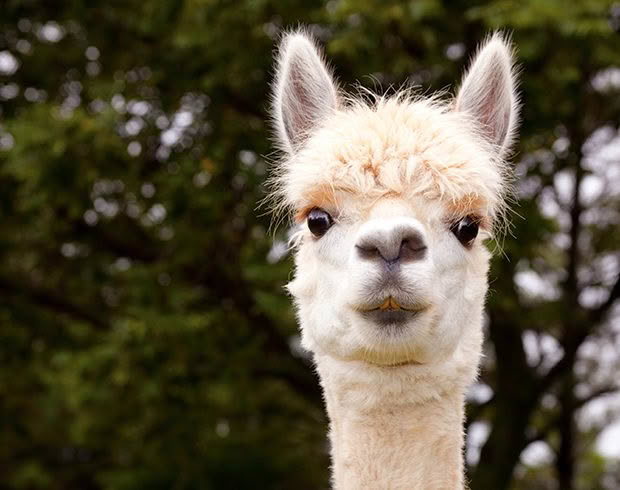
They might seem like easy-going fluff-faces, but alpacas require more care and attention than many owners realise.
Words & photos: Dr Sarah Clews, BVSc
This month we kick off our “Common Mistakes” series with alpaca. These teddy-bear looking fluff-pots with endearing noises and sweet faces have taken the New Zealand lifestyle block community by storm. While some are bred for sale or farmed for their fleece, the majority of lifestylers simply want a small group to keep the grass down. The word about town is that alpacas are a low-maintenance, easy-care species that you can plop in the paddock and simply admire from afar. The reality is more complicated. While they can be easy if managed correctly, we often see the same mistakes made by owners time and time again, creating a high-maintenance situation. Let’s break down some of the key mistakes made.
SHARING THE PADDOCK WITH SHEEP AND GOATS
Alpacas are South American camelids. They’ve developed some very unique requirements and behaviours evolving on the arid, high altitude planes. Alpacas defecate in one communal site, as opposed to scattering it about the paddock. This means any gut worms whose eggs are passed out in the dung are not re-eaten by the next alpaca, and it also means you have an easy source of compost to collect. This behaviour has allowed them to avoid gut worms more than sheep and cattle, but the lack of exposure to worms means they’re not as immune. The problem comes when owners graze alpacas through the same paddocks as sheep and goats. These three species all share many of the same parasites and the alpaca will ingest them from sheep and goat droppings. It doesn’t matter if the alpacas are sharing the paddock with the sheep and goats, or if they are following through afterward – if the sheep and goats are pooing in the paddock, the alpaca will pick up the worms.
ALLOWED (OR FORCED) TO EAT SHORT PASTURE
Alpacas have evolved to wander large areas, eating tall, mature grass. Around 90% of gut parasites live in the bottom 3cm of the pasture, so we see heavy gutworm burdens killing alpacas when they are grazed on short pasture. The problem is, alpacas love short, green grass. In fact most animals do. Young grass is much sweeter. You will hear many alpaca owners complaining that they can’t encourage their alpacas to eat the long stuff, because they avoid it in favour of the short green stuff. In this case, you may need to mow to create an even length and start fresh. Alpacas of all ages should not be allowed to graze any lower than 3-4cm minimum. This means moving them out of the paddock when the pasture reaches this length.
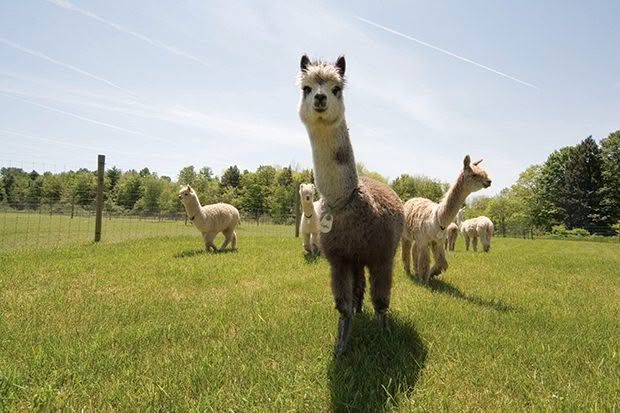
TOO MANY ALPACAS IN TOO SMALL A PADDOCK
Alpacas have not evolved in small paddocks, but rather in wide open spaces. Their strict social hierarchies mean bullying can be rife and stress levels can rise when space is restricted.
When groups are crammed into small paddocks on rich, lush grass, the lack of fibre coupled with the social stress can cause painful stomach ulcers, which are not uncommon in New Zealand animals. Anyone who has had a stomach ulcer can testify to the pain it causes. Alpacas can, and do, die when an ulcer perforates right through the stomach lining, leaking stomach contents into the abdomen. Dehydration, illness, gut parasites and some drugs can also worsen ulcers. Drugs can even kill an animal while under sedation for a routine procedure.
To prevent ulcers, keep stocking rates low. Ensure the paddocks have enough room for animals to move away from each other. Monitor closely for bullying, especially when introducing new animals, and remove any having a hard time. Offer long-stemmed fibre, and limit their pellet intake, unless needed. If feeding pellets, give in small, frequent amounts rather than one big meal.
KEEPING AN ALPACA ON ITS OWN
Alpacas are herd animals. Keeping an alpaca on its own can be so stressful that the animal may die. Because of this, it’s now illegal to keep an alpaca on its own in New Zealand. If an animal is being bullied and needs to be removed, you will need to shuffle the groups so that they still have friends. This also means it is very difficult to hospitalise an alpaca without a friend or two coming along. Isolating an alpaca for handling will instil absolute panic in the animal and make it very difficult to control, so the group should always be moved
as a unit. A group of three is recommended as the minimum. If an alpaca can see another two animals, stress levels decrease dramatically.
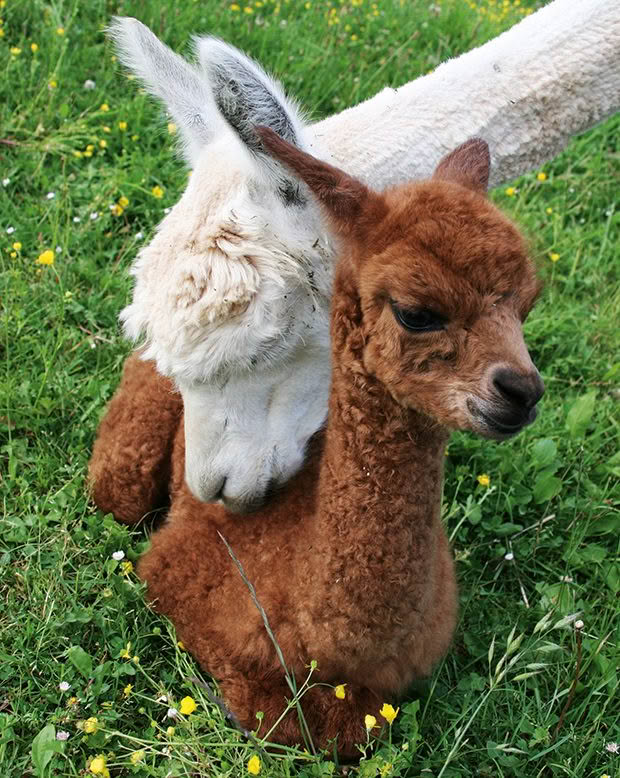
HAND-REARING BABIES
Many well-meaning owners have tried to hand-rear a baby alpaca, or cria, with dire consequences. Alpacas can suffer a psychological condition called “Berserk Male Syndrome”, which is when the animal suddenly becomes dangerously aggressive to people. This is almost always seen in hand-reared cria, and almost always in males (hence the name). When this situation arises, owners are often left with little choice but to euthanise the alpaca – a heartbreaking decision when it’s a little one you have raised and grown to love. It’s advised not to bottle-rear male cria. Instead, you can hide yourself, so they don’t make an association with you at feeding time. Hang a milk dispenser on a fence and crowd the herd around the youngster during feeding times.
Do not coddle the cria or keep them away from their herd. They must learn appropriate alpaca behaviour and social habits.
A “WAIT AND SEE” APPROACH TO ILLNESS
Alpacas are a prey species and they are very good at hiding their pain and suffering. While all our grazing animals are prey species, alpacas are unarguably the most stoic of them all, standing, eating and drinking until near death. But stoicism does not mean they are not suffering: only that they hide it well. Many owners don’t pick up on an animal’s subtle signs of illness in time and the vet is called far too late to be able to intervene. If an owner notices signs of lethargy, poor appetite and separation from the herd, they may take a “wait and see” approach. If an alpaca appears unwell, assume it is already very unwell and needs urgent attention. If you keep any ruminant species, be sure to educate yourself on what to look for to pick up pain and disease early.
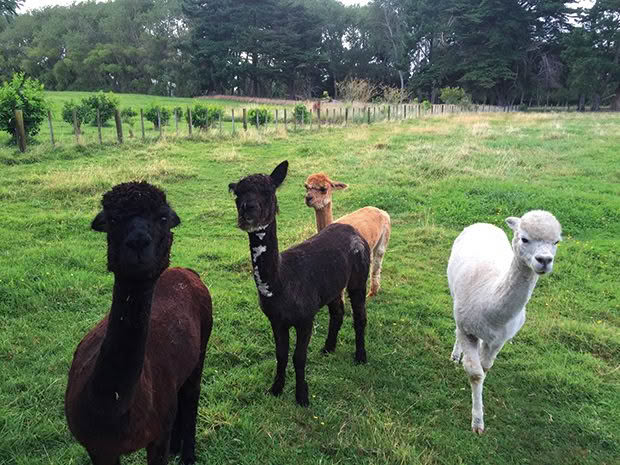
NOT SUPPLEMENTING WITH VITAMIN D
Alpacas evolved at high altitudes, but commonly suffer from a lack of vitamin D here in New Zealand. Animals produce vitamin D when UV light hits their skin. This is necessary for proper bone growth and healing. A lack of vitamin D causes a disease called rickets, which involves painful bones, deformed joints and poor healing. Because alpacas are year-round breeders, vitamin D deficiency is common in:
• Spring-born cria, as the dam was in late pregnancy during winter;
• Autumn-born cria, who will become deficient throughout the winter;
• Any under three years old; their requirements are high while they grow;
• Any thick or black-fleeced alpacas where less UV reaches the skin.
If you are breeding or have young, growing alpacas, routine vitamin D injections are a must.
WHY DO ALPACAS NEED LONG GRASS?
Alpacas are what we call “pseudo ruminants”. They have three stomach chambers which are set up to make good use of the long, low quality, high-fibre grass that they evolved to eat. In the subtropical New Zealand climate with its lush green grass, alpacas frequently fall short on their long-stemmed fibre requirements. “Long-stemmed fibre” means long, mature, poor quality grass, or hay, over 4cm length. This is crucial for alpacas as it:
• stimlates healthy stomach contractions;
• stimulates saliva production;
• encourages chewing the cud.
If they are not getting enough, their digestion will be poor and less nutrition will be absorbed. They may lose weight and have poorly formed faeces. On some blocks, alpacas should have access to ample hay.
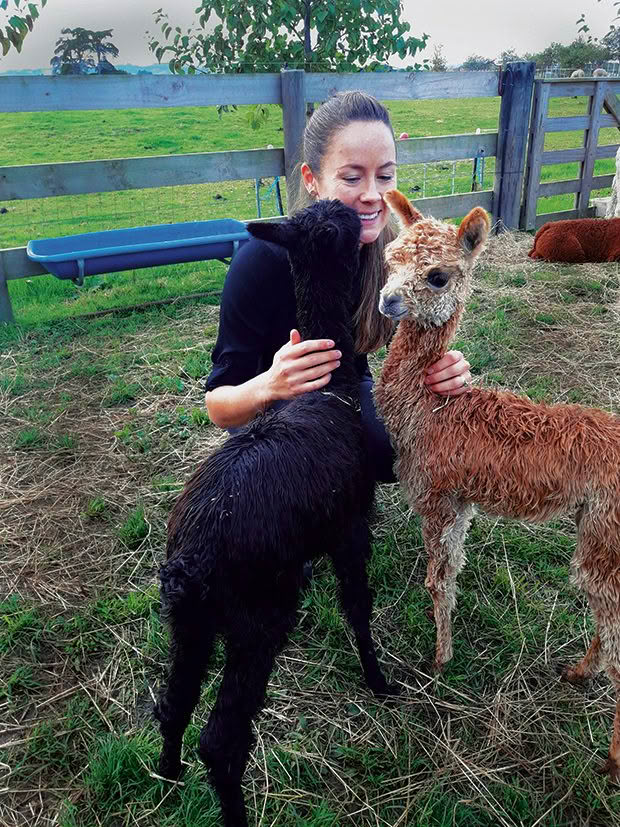
ALPACAS AND SPITTING
There’s a common perception that alpacas are notorious spitters and that if you enter their space you’re apt to get a face-full of saliva. But it turns out alpacas only spit in certain circumstances, and it’s a fairly good gauge of their mood. Spitting is a defence mechanism, and in general alpacas will only spit at other alpacas if they are establishing dominance in the herd, showing displeasure or annoyance around them, fighting or playing.
Despite the misconception, alpacas seldom spit at humans, unless they are being handled and feel threatened. Alpacas are intelligent and highly individualistic, so it pays to get familiar with each of your animals and learn their personalities.
They are also known to produce a range of sounds, which can mean different things depending on the circumstances. They can:
• Hum as their primary means of communication;
• Cluck as a way of expressing concern or affability;
• Snort when another alpaca is encroaching on their personal space;
• Orgle. This is a guttural sound the male makes while mating;
• Scream very loudly when they are mishandled.
Love this story? Subscribe now!
 This article first appeared in NZ Lifestyle Block Magazine.
This article first appeared in NZ Lifestyle Block Magazine.
